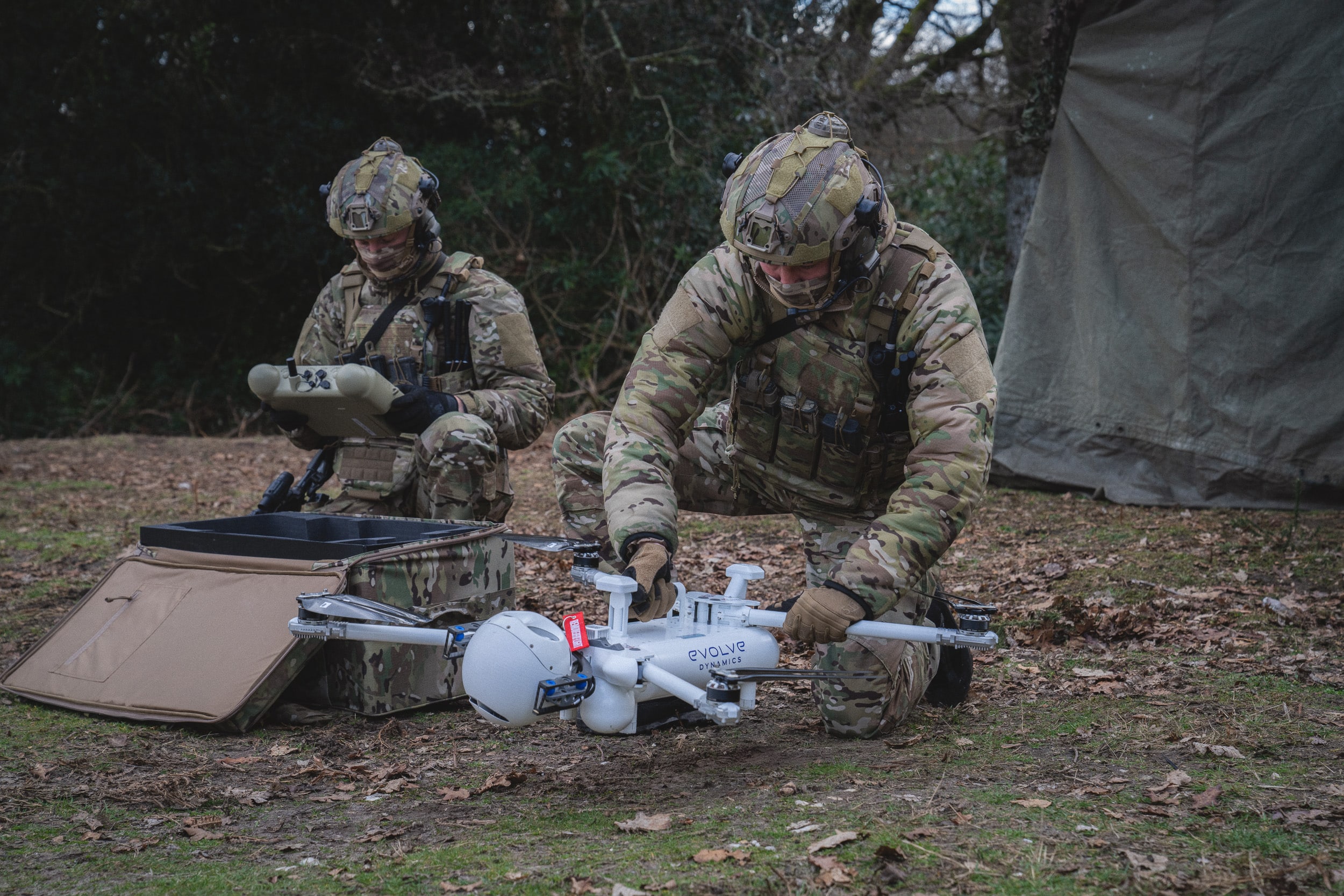What is RF jamming?
Radio frequency (RF) jamming of drones involves deliberate interference with the radio signals used for communication between drones and their operators.
This interference can be achieved by transmitting strong signals on the same frequency as the drone’s control signals, effectively overwhelming and disrupting the communication link. This results in the drone losing control or becoming non-functional, as it cannot receive commands from the operator.
Notes: The two types of jamming that often happen often in the electronic warfare space:
Intentional Jamming (Deliberate interference)
Intentional jamming occurs when an adversary deliberately interferes with your communication signals. The goal is to disrupt your control over unmanned systems, effectively neutralizing their operational capabilities. This type of jamming is a common tactic in electronic warfare, designed to create confusion and hinder mission success.
Unintentional Jamming (Interference)
Unintentional jamming, on the other hand, stems from the myriad of electronic devices prevalent in urban environments. These devices can inadvertently interfere with your communication signals, causing disruptions that are just as detrimental to your mission as intentional jamming. Common sources include Wi-Fi networks, mobile phones, and other wireless communication systems that clutter the electromagnetic spectrum.
Why is RF jamming important in Ukraine?
In Ukraine, the country’s use of drones to turn back invading Russian forces has led to the conflict to be labeled a “Drone War,” and jamming has become one of the top measures Russians use to counter defense forces’ airborne strategy.
British military thinktank RUSI estimated back in May of 2023 that Ukrainian forces were losing as many as 10,000 drones per month mainly due to Russian jamming, and the use of FPV and other drones has since continued to be a key tool in battle along a frontline that is some 1,000 kilometers (620 miles) long. Compounded by reports of Ukrainian personnel shortages, keeping drones aloft has become crucial for Ukraine.
As Russians develop new jamming measures, Ukrainian drone suppliers and operators invent new counter-measures, and the cat-and-mouse game of technology development continues.
How does RF jamming work?
The primary goal of RF jamming is to break the communication link between the drone and its operator. This can lead to the drone crashing, returning to its home point, or hovering aimlessly until its battery depletes.
Techniques used for RF jamming:
Broadband Jamming: Involves transmitting high power noise across a broad range of frequencies, covering the drone’s communication channels.
Spot Jamming: Focuses on a specific frequency band used by the drone, providing a more targeted and efficient disruption.
Barrage Jamming: A combination of broadband and spot jamming, targeting multiple frequencies simultaneously to ensure disruption.
Devices used for RF jamming:
Fixed radar and jammers: The most powerful jammers are larger, fixed variants, many of which provide static protection of key assets and stores of mobile equipment. Static CUAV (counter-uncrewed aerial vehicle) equipment include equipment like the Argus-5000 and the SkyHunter-4M/P.
Mobile electronic jammers: Portable jammers like the Volnorez fit in a backpack and can be used to disrupt and ground drones.
Ad-hoc jammers: According to reports, Russians have utilized RP-377 jammers, originally developed to jam combatant radio comms equipment, as vehicle-mounted jammers that can disable incoming drones at relatively close range.
How can RF jamming be countered?
One approach to counter intentional jamming attempts is to detect interference and quickly switch to a different operational channel or band to elude an incoming jamming signal. This is the approach employed by Sense, a LPI (low probability of intercept) /anti-jam feature-set available on Doodle Labs Mesh Rider Radios that are employed as advanced drones’ primary datalink.
With Sense activated, Mesh Rider Radios scan for interference and background noise across all frequency bands. Once the node on the network is deployed into the field (whether it is a UAV, UGV or connected team-member), Sense continually monitors the health of its LPI/LPD datalink signal. If the datalink starts to experience significant interference, Sense automatically shifts to a better-performing channel with the current band or to a different band altogether, maintaining connectivity and optimizing performance during the mission.
To understand how Sense works in a more familiar context, think of radio frequencies like traffic lanes. Just as you would switch to a clearer lane on a busy highway to avoid traffic, Sense helps your communication system switch to a clearer frequency to avoid interference. This smart frequency management ensures that your unmanned systems maintain a robust and reliable connection, even in the face of intentional or unintentional jamming.

Sense is battle-tested in challenging environments in Ukraine, where it’s helping to avoid interference caused by active jamming.
Teal Drones / Red Cat reported successfully passing electronic warfare field testing with Doodle Labs Mesh Rider Radios and Sense in its prototype drone.
British UAV manufacturer Evolve Dynamics, a key supplier of drones to Ukrainian defense forces and other international police forces, fire services, energy inspection outfits, search & rescue organizations and UK Ministry of Defense customers, employs Doodle Labs Mesh Rider Radios and Sense to keep its cutting-edge Sky Mantis 2 aloft in contested airspace.

“No matter how great the base platform is, without that perfect radio link, it’s only got limited use.” said Mike Dewhirst, Founder of Evolve Dynamics. “So you bring those two together and they don’t just become the sum of the two parts, but it’s a massive multiplier and you suddenly get that magic, perfect combination, that perfect storm of all of the requirements of the system, in terms of flight time, weather, resilience to jamming, distance, performance, sensors, usability and rapid deployment, as well.”
The government and defense-focused Helix Doodle Labs Mesh Rider Radios were developed with sponsorship by the US Department of Defense’s Defense Innovation Unit for its Blue UAS program. Helix variants are available in a variety of licensed multi-band frequency combinations specifically suited for government use, and its LPI/LPD waveform meets the highest standards of defense and special forces outfits. Sense takes full advantage of this wide array of spectrum to avoid active jamming in the field.
Click here to learn more about Sense for interference-avoidance and anti-jamming.
